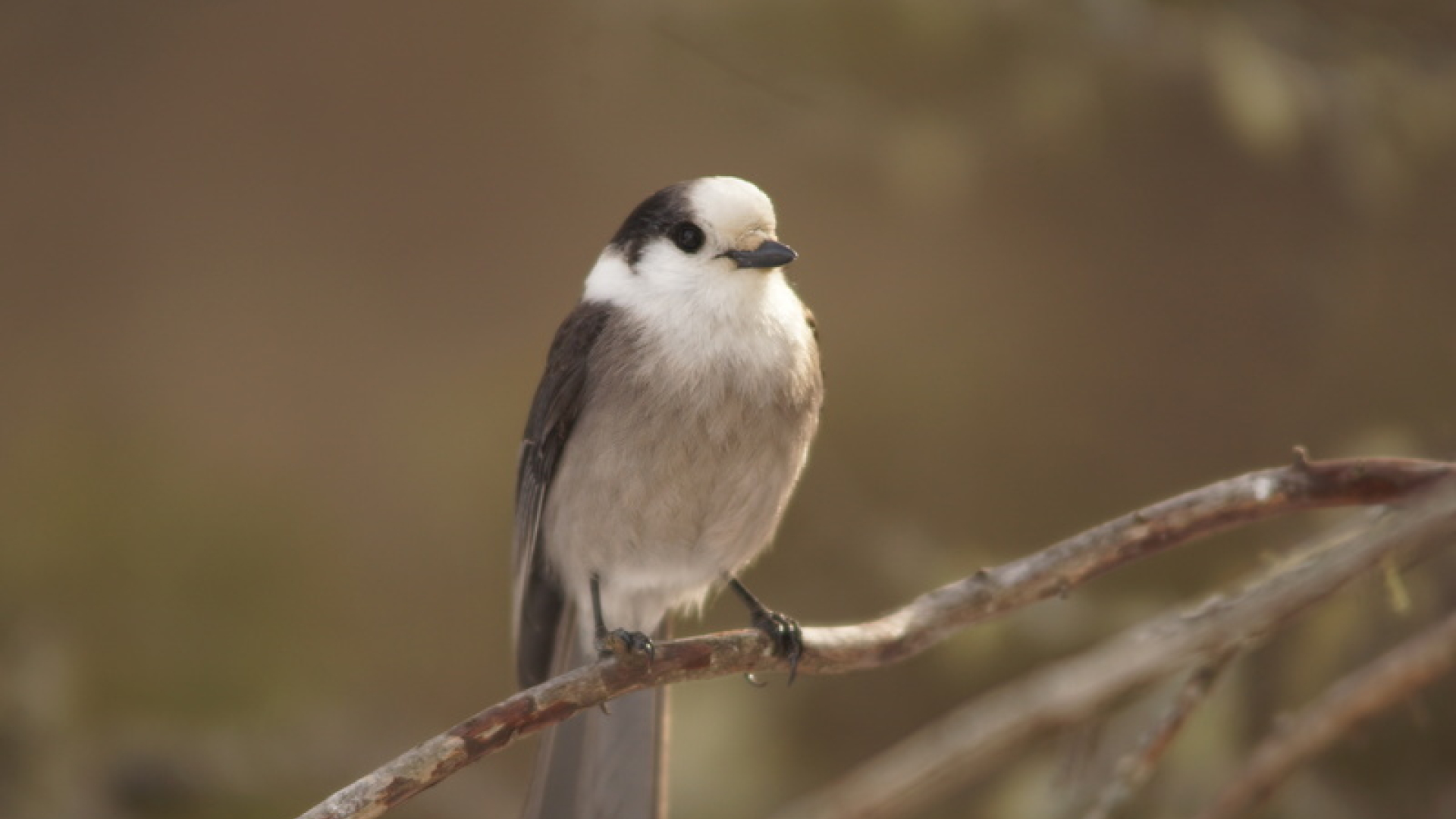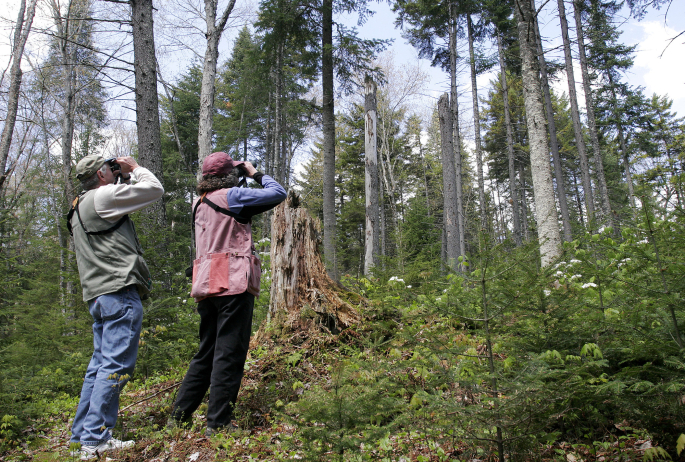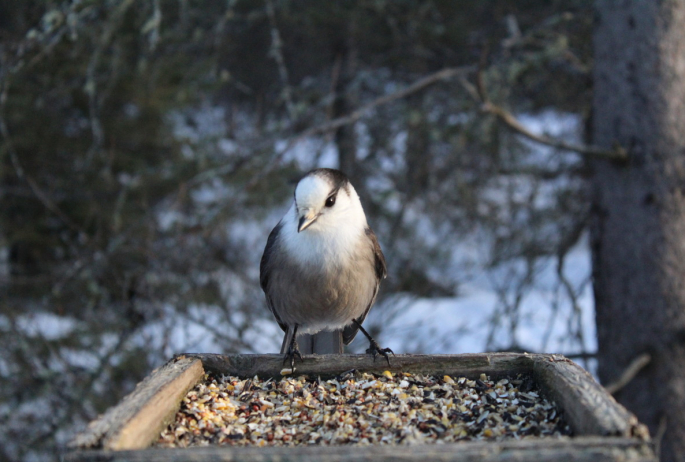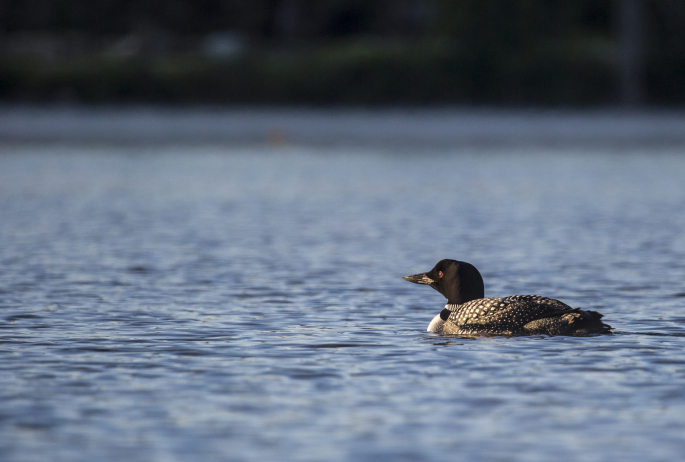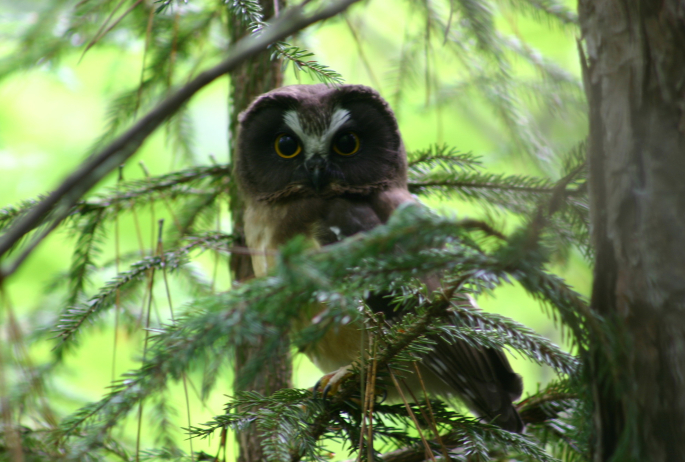A Chilly Start to Spring
While winter held off the arrival of spring this year with both hands, warm weather is finally coming on in full force – and birds are coming with it. After all, even with the chilly weather we’ve had this spring, birds have been on the move – with ducks like Ring-necked Duck, Bufflehead, Lesser Scaup, and both Hooded and Common Mergansers on Lake Flower in Saranac Lake, and sparrows such as Fox, Vesper, Savannah, and Field joining numbers of Song, Swamp, White-throated, and Dark-eyed Juncos at feeders and birding sites in the area.
In the past week or so as the weather has started to warm up, I’ve found species like Palm and Yellow-rumped Warblers, Ruby-crowned Kinglet, Sandhill Crane, Common Loon, American Woodcock, Merlin, Osprey, and Yellow-bellied Sapsucker. And our late April snows are not going to keep others away for long.
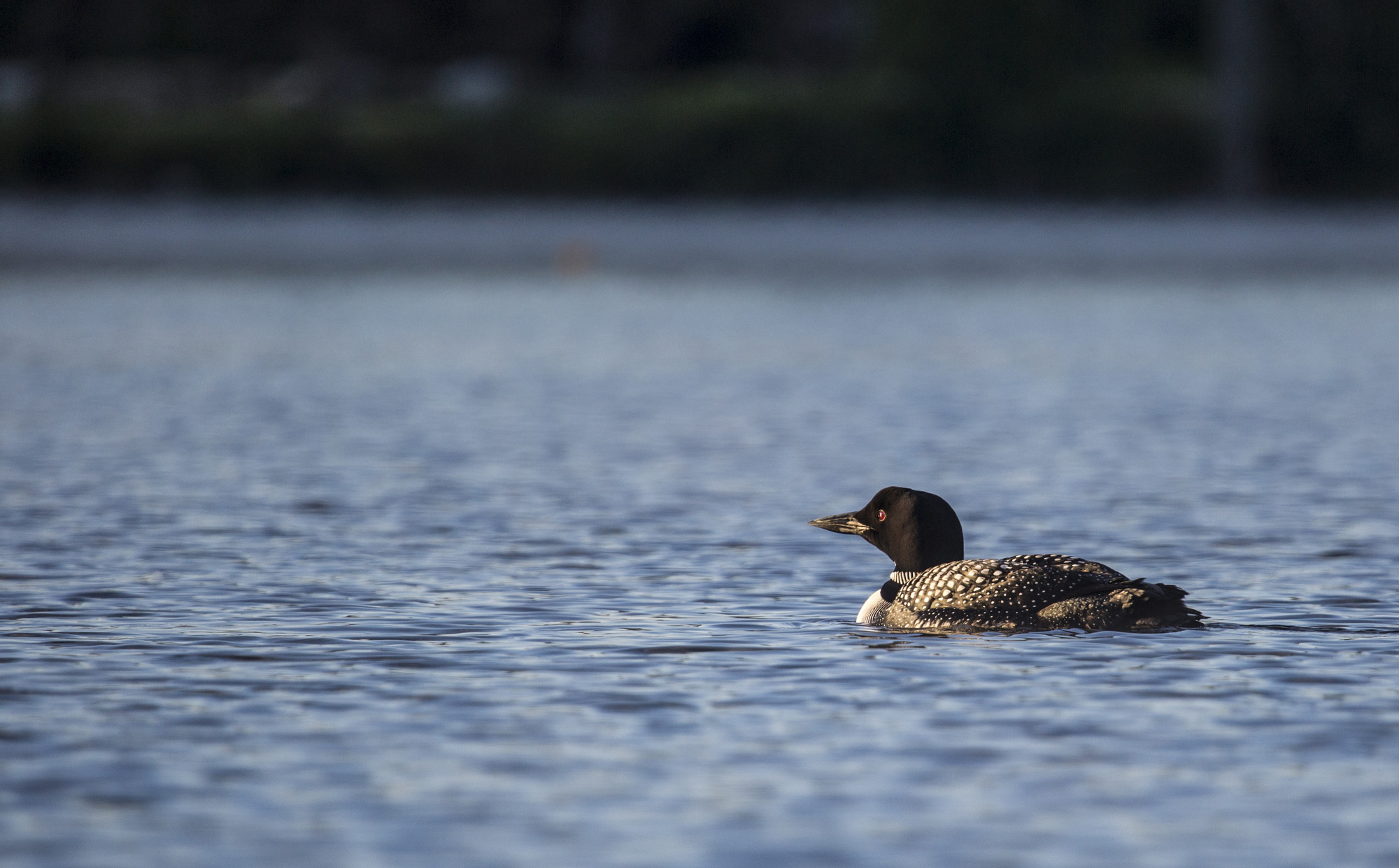
The Diversity of the Nesting Season
The nesting season is the single most important event around which the entire bird calendar revolves, and the birds are going to be here – chilly weather and all. Not only that, but Adirondack springs often begin as a vacillating pendulum between warm and cold before spring – and eventually summer – finally win out.
And so as the snow melts for the final time of the season and the leaves bravely poke their faces out from the buds in the hopes that warm weather will greet them, a feathered diversity of birds arrives to celebrate the season. Actually they come to breed here or to migrate further north to nest, but in the mind of a birder, it certainly feels like a celebration.
Hence the Great Adirondack Birding Celebration (GABC) is aptly named. Birding enthusiasts should not miss this annual celebration based at the Paul Smith’s College VIC. The GABC has been taking folks out on birding adventures for years on the first weekend in June – when our recently arrived birds are in their places and singing on cue. Their concert is not one to be missed.
This seasonal performance takes place across the Adirondacks and North Country, and the GABC targets some of the best places to witness it. These include trips by car, foot, and canoe – giving birders fun options to explore.
So Many Places to Go — So Many Birds to See!
Birders can check out research on Common Loons, look for Bicknell’s Thrush, Yellow-bellied Flycatchers, and other species in the montane spruce-fir forests on the top of Whiteface Mountain, or beginning birders can learn some of the tools of the trade.
Many folks will be interested in the trips to premier boreal birding locales in the region – including Bloomingdale Bog, Spring Pond Bog, and Madawaska – the trip I most often lead. These trips take them to places where they can find the likes of Black-backed Woodpeckers, Gray Jays, Boreal Chickadees, and possibly even a state-listed Spruce Grouse. These same locations are also great for Lincoln’s Sparrows, Yellow-bellied Flycatchers, and Olive-sided Flycatchers, all of which only recently arrived back in the Adirondacks for the summer.
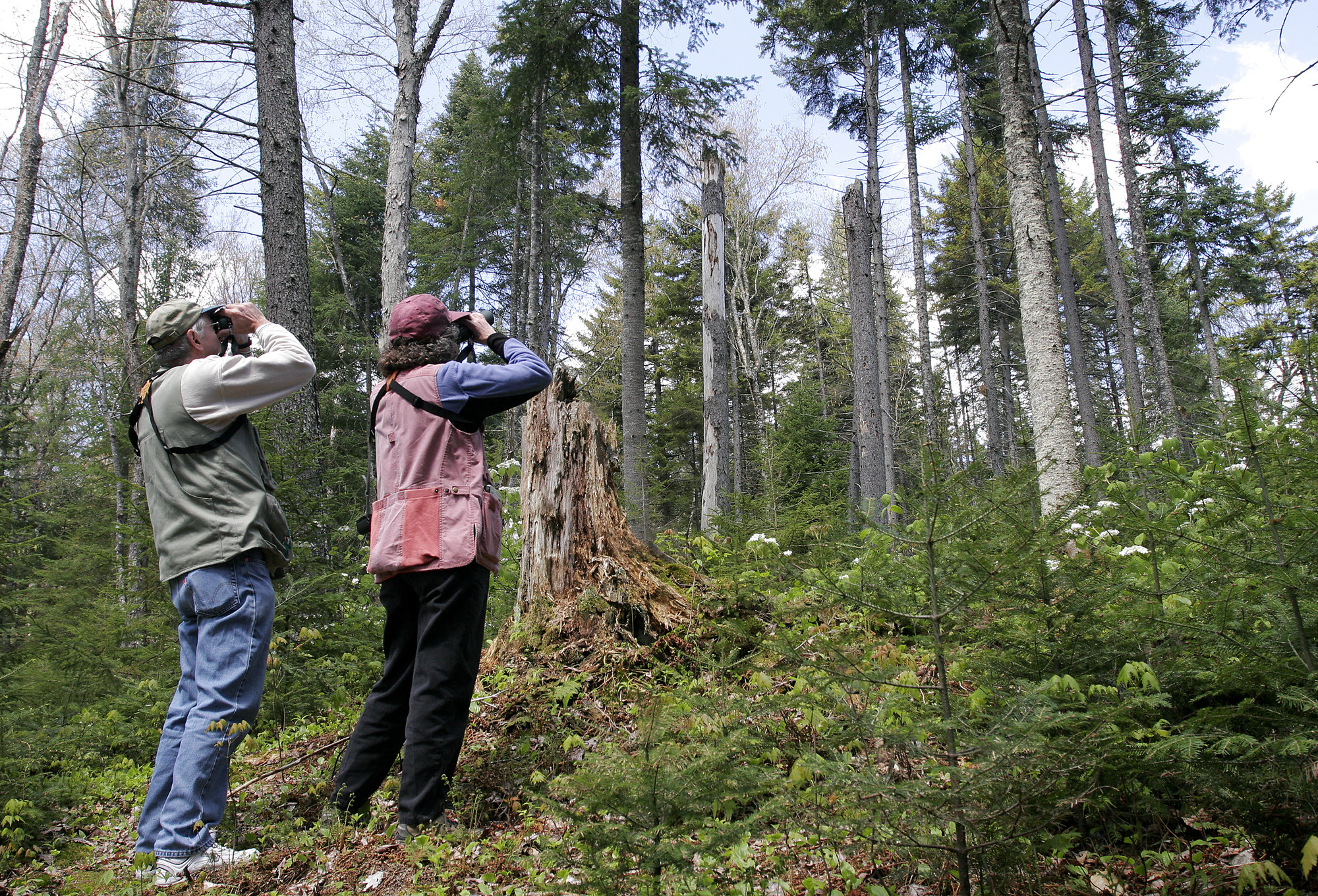
More than that, the woods everywhere are loaded with vireos, tanagers, grosbeaks, finches, sparrows, flycatchers, and of course, an array of warblers. In fact over 20 species of warblers breed in the Olympic Region alone and the GABC gives folks an opportunity to find all of them, not to mention the chance for lingering migrants still on their way north. And so, GABC participants can find: Blackpoll Warblers singing from the top of Whiteface Mountain; Mourning Warblers in some of the young forests along Blue Mountain Road; Nashville, Magnolia, and Palm Warblers in our bogs and coniferous habitats; and Black-throated Green Warblers and American Redstarts in the area’s deciduous forests.
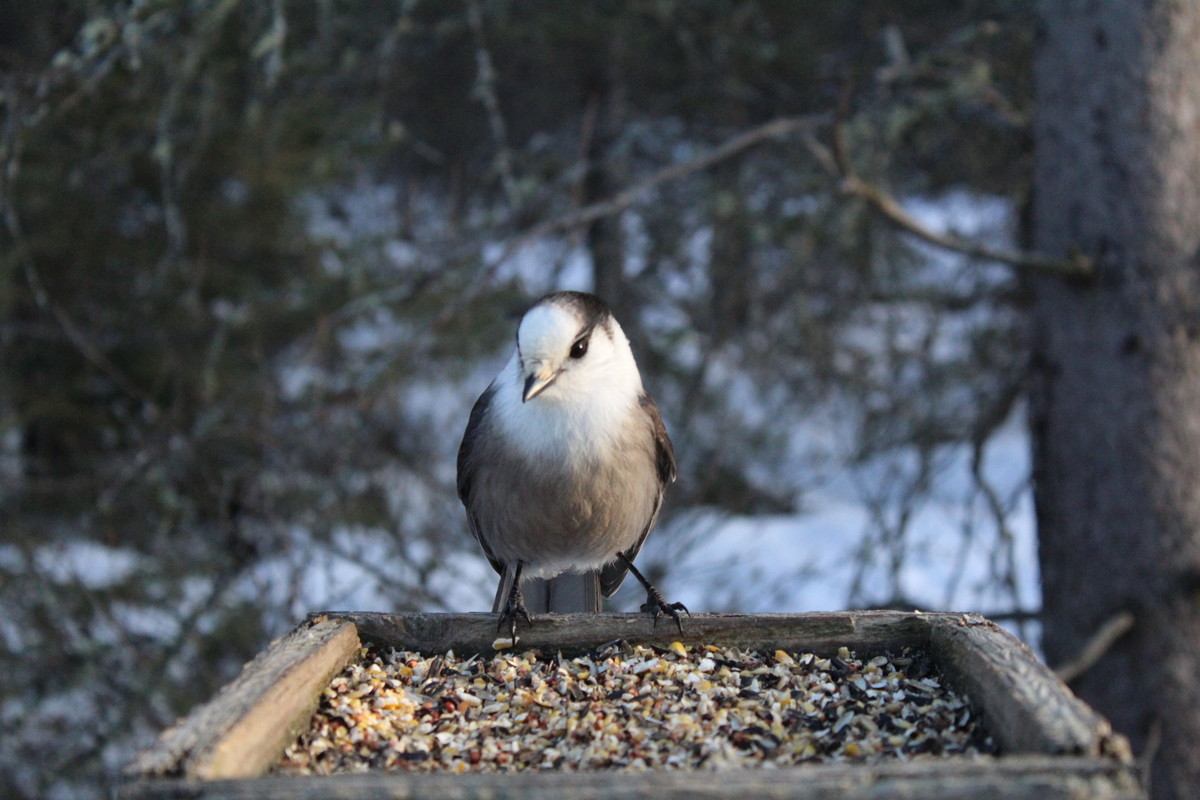
Not only that, but two additional trips take birders either to the St. Lawrence Valley or to the Lake Champlain Region where birders can find both Golden-winged and Blue-winged Warblers, and where birdwatchers can explore the edge habitats, fields, and wetlands in the surrounding valleys.
Such trips can pad the lists of birders with Baltimore Oriole, Eastern Kingbird, American Bittern, Virginia Rail, Least Bittern, Green Heron, Caspian Tern, Black Tern, Bobolink, Eastern Meadowlark, Great Egret, Great Horned Owl, Indigo Bunting, and a long list of others. Both trips take birders to great spots.
And so, despite the persistent snows and chilly weather, spring will win this ongoing battle with winter, ushering in the diversity of May and June and one of the best times of year to bird the region. It is a time of year which beckons us to get outside. At time of year which begs us to explore. And a time of year which calls for a celebration.
Plan your spring and summer birding trips today, and learn more about the GABC here. And while you’re at it, we've got great places for to stay and dine during your visit!
